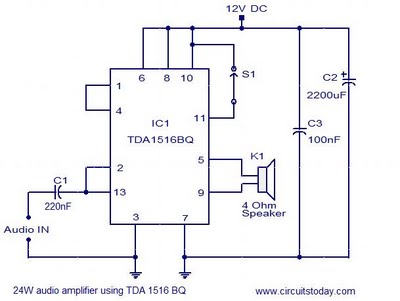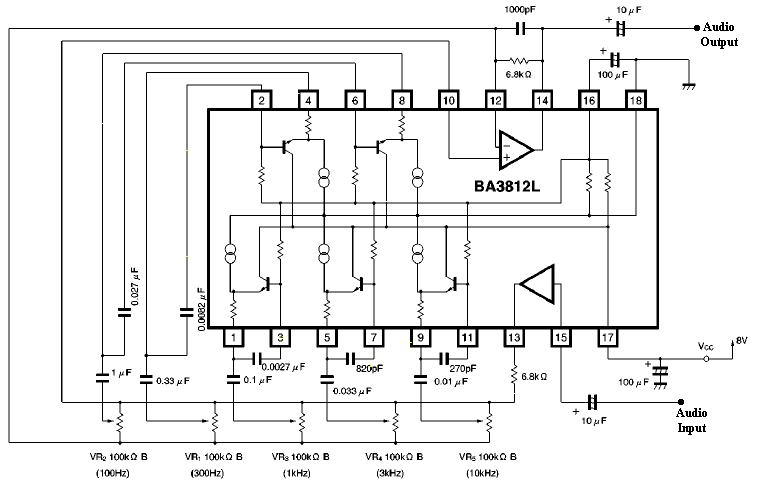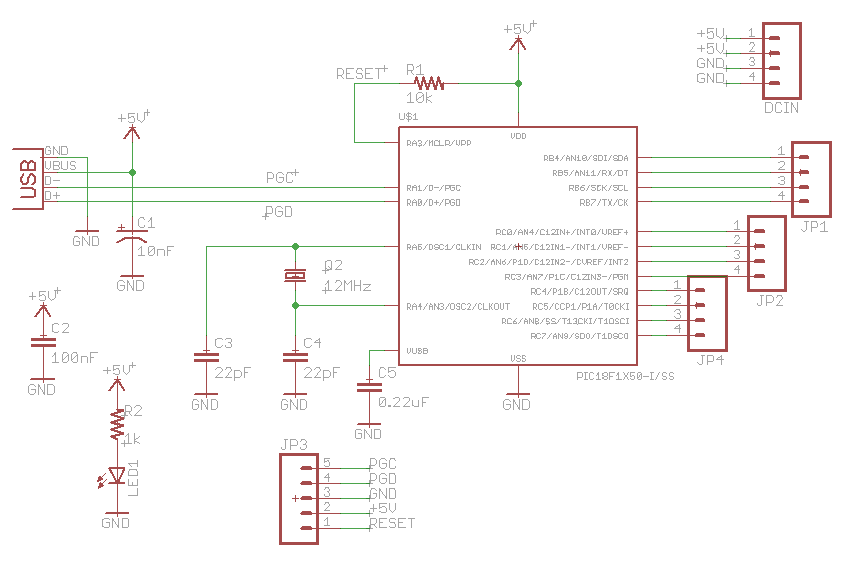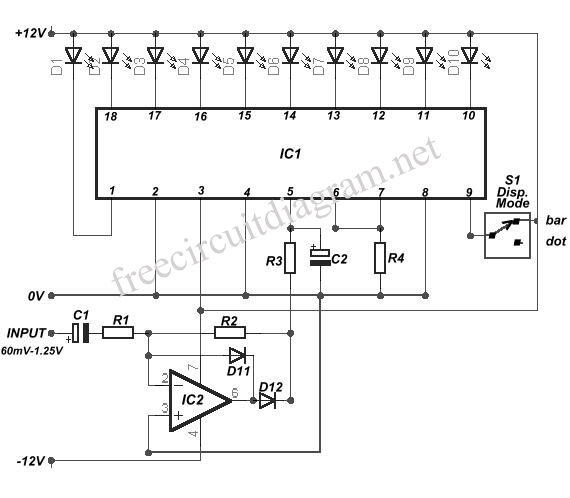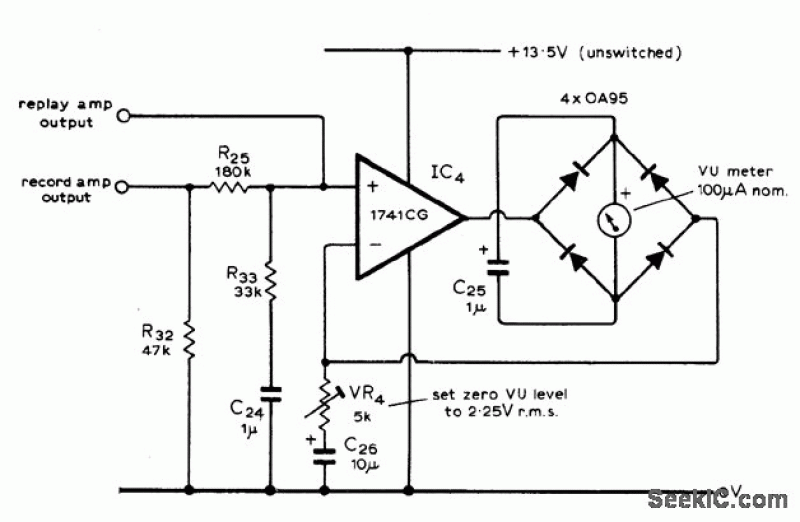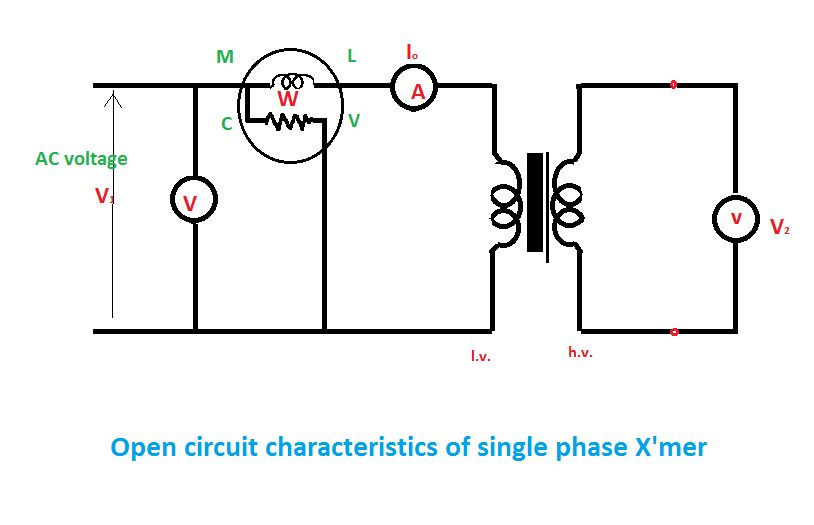
VU Meter using UAA180
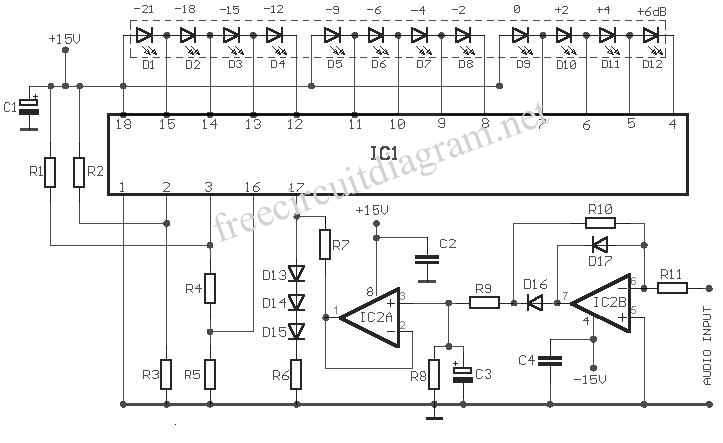
This circuit utilizes the SIEMENS and UAA180 rectification measurement circuits for accurate signal processing, centered around the TL072 integrated circuit (IC2B). Calibration occurs in 3dB increments, ensuring a high level of precision for measuring incoming acoustic signals. The LEDs can be arranged in a square formation, allowing them to be positioned adjacent to one another to create a continuous bar without gaps. The UAA180 LEDs are controlled by an integrated circuit (IC) that manages 12 UAA180 LEDs, serving as indicators for levels ranging from -12dB to +6dB.
The circuit is designed to provide a reliable method for visualizing acoustic signal levels through a series of LED indicators. The core component, the TL072 operational amplifier, is configured for rectification, enabling it to convert the incoming analog acoustic signals into a usable form for the LED display. The calibration process, which occurs in 3dB steps, allows for precise adjustments to be made, ensuring that the visual representation of signal strength is accurate and easy to interpret.
The UAA180 LEDs are strategically arranged to form a bar graph display, which provides an intuitive visual feedback mechanism. Each LED corresponds to a specific decibel level, with the lowest LED indicating -12dB and the highest indicating +6dB. This design not only enhances visibility but also allows for quick assessment of signal levels at a glance.
The use of the TL072 op-amp is particularly beneficial due to its low noise characteristics and high input impedance, which are critical for maintaining the integrity of the acoustic signals being measured. This configuration ensures that the circuit can operate effectively across a wide range of signal amplitudes without introducing significant distortion or noise.
In summary, this circuit is a sophisticated tool for measuring and visualizing acoustic signals, utilizing advanced components and thoughtful design to achieve high precision and clarity in signal representation.This circuit uses the measurement of SIEMENS and UAA180 circuit of rectification of accuracy, around IC2B TL072. Calibration has been a 3dB steps from one another LED, make sure, a very good level of precision, the measurement of acoustic signals entering.
LED can be square, so that when they put one by the other, they give you a bar, without spaces. Led UAA180 controlled by IC, IC 12 Led UAA180 control, which is as an indicator LED to-12dB to 6 dB 🔗 External reference
The circuit is designed to provide a reliable method for visualizing acoustic signal levels through a series of LED indicators. The core component, the TL072 operational amplifier, is configured for rectification, enabling it to convert the incoming analog acoustic signals into a usable form for the LED display. The calibration process, which occurs in 3dB steps, allows for precise adjustments to be made, ensuring that the visual representation of signal strength is accurate and easy to interpret.
The UAA180 LEDs are strategically arranged to form a bar graph display, which provides an intuitive visual feedback mechanism. Each LED corresponds to a specific decibel level, with the lowest LED indicating -12dB and the highest indicating +6dB. This design not only enhances visibility but also allows for quick assessment of signal levels at a glance.
The use of the TL072 op-amp is particularly beneficial due to its low noise characteristics and high input impedance, which are critical for maintaining the integrity of the acoustic signals being measured. This configuration ensures that the circuit can operate effectively across a wide range of signal amplitudes without introducing significant distortion or noise.
In summary, this circuit is a sophisticated tool for measuring and visualizing acoustic signals, utilizing advanced components and thoughtful design to achieve high precision and clarity in signal representation.This circuit uses the measurement of SIEMENS and UAA180 circuit of rectification of accuracy, around IC2B TL072. Calibration has been a 3dB steps from one another LED, make sure, a very good level of precision, the measurement of acoustic signals entering.
LED can be square, so that when they put one by the other, they give you a bar, without spaces. Led UAA180 controlled by IC, IC 12 Led UAA180 control, which is as an indicator LED to-12dB to 6 dB 🔗 External reference
